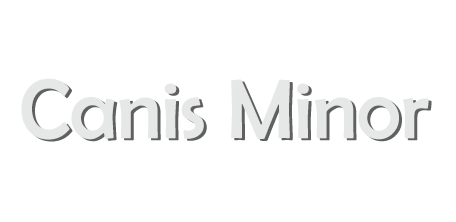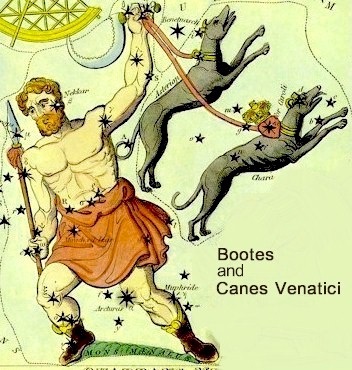
Most of the constellations are known and recognised on parameters such as their magnitudes, light years, how old are they, its position in the galaxy and so on. However, there is a constellation which is small and has a little interest in all these mentioned factors. It is only known for and is concerned with its brightest star Procyon. The star is one of the eight brightest stars in heaven. Representing one of the dogs that follow the hunter Orion, its name means ‘the smaller dog’ or ‘lesser dog’ in Latin and was first documented by the Greek astronomer Ptolemy in the 2nd century. A constellation belonging to the Orion family of constellations, it can be best seen in the month of August at 9 pm. Let us discuss Canis Minor in detail.
There are five stars in this constellation, they include:
- Procyon or Alpha Canis Minoris: It is an extraordinary bright star and the seventh brightest star in the sky located very close to the sun. The name is derived from a Greek name ‘prokyon’ which means ‘before the dog’. It has an apparent visual magnitude of about 0.34 and is approximately 11.41 light years away from the earth.
- Gomeisa or Beta Canis Minoris: This is the second brightest star in Canis Minor. Its name is derived from an Arabic word ‘al–ghumaisa’ meaning ‘the bleary–eyed (woman)’. Due to the outflow of matter, it rotates and exhibits irregular variations in luminosity. As these stars are surrounded by a disk of ejected material heated up by the emissions of the stars, they are also known as Shell Stars. They are approximately 170 light years distant and have a magnitude that varies between 2.84–2.92.
- Gamma Canis Major: It is a spectroscopic double star, which is an orange K–type giant. It is approximately 398 light years distant and has a magnitude of about 4.33.
- G Canis Minoris: Another binary star, it is an orange K–type giant. With an apparent magnitude of about 4.39, it is approximately 261 light years distant from the earth.
Luysten Star: It is a faint red dwarf and is the 22nd nearest star system to the earth. It has a magnitude of about 9.87 and is approximately 12.36 light years distant.
Canis Minor has numerous deep sky objects which are very faint therefore, not observable or visible. The brightest of the deep sky object is NGC 2485, whose apparent magnitude is 12.4 and is the brightest of the spiral galaxy.
It lies in the second quadrant of the northern hemisphere (NQ2) and can be seen at latitudes between +90° and -75°.
It occupies an area of 183 square degrees, making it the 71st largest constellation in the sky. The brightest and the furthest star Procyon is about 11.41 light years distant from earth.
A Greek myth states that Bootes is identified as Icarius, a grape grower and a wine–maker. God Dionysus had taught him to make wine which when he did make got him killed. After tasting Icarius wine, his friends were high; as they were tasting wine for the first time, they mistook drunkenness to the effects of poison. Assuming that Icarius wished to kill them by poisoning them, they murdered Icarius. His body was found by his dog Maera who ran and brought Icarius’ daughter Erigone to his body. On seeing the dead body of her father, she hanged herself to death while the dog jumped off a cliff. Seeing this Zeus thought that they deserved a place in heaven; he transformed them into constellations: Icarius became the Bootes, Erigone into Virgo constellation and the dog became the Canis Major.

Canis Minor is surrounded by constellations such as Cancer, Gemini, Hydra and Monoceros.


